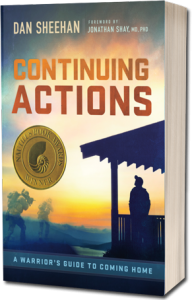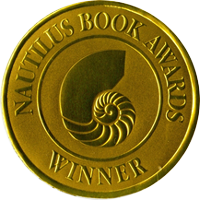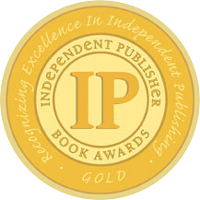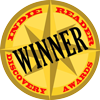Continuing Actions Chapter 1
NONE OF THIS IS NEW
A FEW YEARS BEFORE the invasion of Iraq, Mongo (his mom didn’t name him that; we—his friends—did) was flying a Cobra helicopter with a senior officer from our squadron. Crossing a huge desert training range, they heard the electronic beeping of an Emergency Locator Transmitter (ELT) coming through their radios. Knowing a stricken aircraft must be nearby, they began searching and soon spotted smoke rising above the desert scrub. Not far away from the blackened remains of the jet, they saw the pilot, still strapped in his ejection seat and not moving. After landing the Cobra beside the wreckage, the senior officer sent Mongo over to verify the pilot was dead. His undeployed parachute left no question, but they still had to confirm it.
After visually examining the burnt body, Mongo got back in the Cobra expecting the training mission was over and that they would return to base. After all, they’d just found a dead pilot— there must be some paperwork they had to do. But the senior officer had no intention of going home. Acting as if nothing had happened, he ordered Mongo to continue the flight while he radioed their findings at the crash site to Range Control.
Mongo did a pretty good job of pushing the dead pilot out of his mind, but his basic air-work and instrument approaches for the rest of the flight were sub-par. When they finally returned to base, the senior officer was savage in his debrief of Mongo’s instrument-flying skills and publicly demanded he be scheduled for remedial training. The rest of the young pilots in the squadron commiserated with Mongo but understood the point: We were expected to focus on our mission, nothing else.
That particular senior officer was a flaming asshole, but his point was valid and in keeping with the general attitude among most people in dangerous professions: To allow tragedy to distract us is dangerous and unacceptable. There’s just no room for dis- tracting emotions when death is always milliseconds away.
Controlling these emotions keeps us alive, focused, and fighting for the men and women counting on us to accomplish our mission. This is a good thing—in some cases the most important thing—but it comes at a cost.
THE COMBAT MINDSET
The mindset that subordinates or shuts off emotion is common among warriors. Our ethos demands strength in the face of all adversity, and any perceived weakness is ruthlessly rooted out and destroyed. I learned early in my career that strength meant remaining firmly focused on the external threats and challenges of flying a helicopter gunship—regardless of what was happening around me. That single-minded focus served me well when, in spring 2003, I flew across the border into Iraq.
I was at the peak of my game. A Marine captain with over 1200 flight hours in the AH-1W SuperCobra, I knew my aircraft inside and out and was brimming with confidence. I wasn’t afraid of getting killed or wounded; my main worry was that the war might not happen at all. When it finally did, I felt a sense of relief.
My confidence was appropriately placed. I’d been on active duty for over seven years by the time we invaded. Every physical challenge I would face in Iraq had been thoroughly addressed by years of realistic training—on the ground, in the air, and while deployed overseas. That training allowed me to handle surface-level threats effectively to the point where destroying Iraqi soldiers took very little conscious effort on my part. Behind those physical challenges, though, behind the mechanical manipulation of controls and switches and the application of tactics and weapons, inner conflicts were brewing. Being technically and tactically proficient did nothing to protect me from the realization that my actions were violating the basic tenets of humanity. War, and its inherent cheapening of life, poses deeply personal challenges to any normal human and I was no exception. But these internal challenges had never been mentioned in my training, so I thought myself weak when they began to intrude into my life.
Restlessness, an inability to relax when there was nothing pressing to do, and a craving for more action made me uneasy and irritable during lulls in the fighting. Something told me that quiet reflection was very dangerous, and I shunned profound thoughts of any type.
While engaged in combat, the unease was suppressed—physical battles had priority and I was not about to make the enemy’s job easier by allowing myself to get distracted. But when I came home, it was a different story. At home I had no external threats to worry about, no physical battles to throw myself into. Without those distractions, the effects of my neglected inner challenges became harder, and eventually impossible, to ignore.
I wrote about my experiences in Iraq, and how they followed me home, in After Action: The True Story of a Cobra Pilot’s Journey. I will not rehash that story here and only mention it in case you want more information about where I’m coming from with this whole “warrior” thing.
In that first book, I exposed all the internal second-guessing I’d gone through during my first tour and how I avoided dealing with the aftermath by drinking and redeploying the first chance I got. I really had no idea how After Action would be received and was nervous about how other warriors would react to it. I imagined conversations between Marines I’d served with that dissolved in derisive laughter at the mere mention of my name.
“I never would have figured Shoe to be a pussy. . . . Who knew he was such a weakling? . . . Guess he just wasn’t strong enough to handle it.”
But, instead of contempt, the responses I got from veterans of all services and conflicts were overwhelmingly supportive. I’d hit on something universal we’d all experienced but refused to mention because we thought we were the only one. Marines, sailors, soldiers, airmen, police officers, paramedics—it didn’t matter. None of us had received training for how to deal with the emotions generated by what we’d been called to do. Even the legitimacy of our basic human reactions was denied because our training hadn’t deemed them important enough to even mention. There was just no appropriate way to express those emotions without violating our warrior personas. So we hid them—and began suffering the consequences.
WE’RE NOT ALONE
Since I wrote After Action, many veterans have told me their own personal struggles after coming home from combat. World War II, Vietnam, Liberia . . . the particular conflict is irrelevant. They all left indelible marks on the men and women who fought in them. Some marks were made apparent by external reactions while others eroded the veteran from within. These injuries came in the form of psychological wounds variously called shell shock, battle fatigue, soldier’s heart, or most recently, Post Traumatic Stress Disorder (PTSD). But sometimes they took a different, less clearly defined form. Veterans spoke about feeling disconnected from themselves, alienated from the person they were before combat. It wasn’t on the surface—they could resurrect the shell of who they were and fool just about anybody if they wanted to— but deep down they didn’t know who they were anymore. Others described their postcombat lives as “hollow” and expressed a certain jealousy of their buddies who’d died in combat—at least they’d gone out on top. Regardless of the specifics of the veterans’ experiences, their lives were split into “before” and “after.” And the reality of the “after” phase was not something they were prepared for.
Just like past wars, the veterans of Iraq and Afghanistan are coming home with invisible wounds. That this most recent generation of veterans is experiencing the same postcombat challenges as their predecessors is proof, not only that these reactions are normal, but also that we haven’t learned how to handle them.
TREASURES FROM THE PAST
Has anybody ever had a good understanding of these challenges? The answer is yes, but we seem to have forgotten it—and where to find it.
Joseph Campbell was a comparative mythologist who studied the cultural mythology of civilizations and societies throughout history. His work and insights are widely respected because he explained how myths contain truths about universal human experiences and provide roadmaps through many of life’s challenges. One of his greatest contributions came from his examination of the heroic monomyth, an archetypal human journey reflected in the hero myths of disparate cultures around the globe.
Campbell discovered that tales of great heroes contained the same general sequence and components whether they came from ancient Greece or an Inuit tribe in the frigid north. The path is this: The hero separates from the known world, overcomes a series of trials to gain something of value, and then returns to the known world to share that valuable treasure with his people.
On the surface it looks simple, but this path, recorded over thousands of years by civilizations large and small, exposes a critical gap in our modern warrior’s journey: We have forgotten how to return.
The heroes Campbell studied were of myth and legend, not flesh and blood. But when I read his work, I saw how I, and millions of other veterans, had closely followed the initial stages of the journey he described. More importantly, I saw how the absence of guidance for the final stage of this journey forces modern warriors to recreate ancient knowledge on their own— or suffer the consequences.
A MINOR ROADBLOCK
Campbell’s research illuminated a pathway through the challenges many modern veterans face, but he unknowingly denied us access by labeling it “The Hero’s Journey.” This is because “hero” is a loaded word for veterans. But when you take into account how its meaning has changed over time, you can understand why “hero” so accurately describes these ancient warriors—and ourselves.
In ancient Greece, a hero was not a godlike personage devoid of human frailties. In fact, a person bearing that label was as likely to be feared as to be loved. It is this type of hero, rather than a John Wayne character, that Campbell was referring to.
Ancient Greek heroes were men of pain who were both needed by their people and dangerous to them. Achilles’ withdrawal resulted in number- less Greek deaths; Odysseus’ long return home to Ithaca caused more than seven hundred Ithacan deaths on the way or when he got there. Achilles harmed the Greek army during the war; Odysseus harmed his people after the war. They were both heroes in the ancient Greek sense. (Jonathan Shay, Odysseus in America, p.2)
While many of our actions clearly fit the template established by these ancient heroes, being called a hero still makes many, if not most, veterans uncomfortable. And I don’t think pointing out the shifting linguistic meaning of the word is going to change that. While the general population considers it an appropriate moniker for everybody in uniform, veterans have a much higher standard that must be met before they’ll bestow that label on anyone. Even Dakota Meyers, winner of the Medal of Honor in Afghanistan, refused to accept the label of hero.
“When the president hung that medal around my neck, I felt glum. I couldn’t smile and I said nothing. I gave no remarks and avoided the press. As a Marine, you either bring your team home alive or you die trying. My country was recognizing me for being a failure and for the worst day of my life.” (Dakota Meyers and Bing West, Into the Fire, p.160)
Regardless of how the interpretation of the word has changed over time, none of us is likely to self-identify as a hero. This is because we’ve seen our heroes in action. We’ve lived with them, fought alongside them, and—more often than not— buried them. And I’ve never once met a hero who considers himself one.
But we can identify with Campbell’s “Hero’s Journey” with one small adjustment—by substituting “warrior” for “hero.” For me, this substitution sidestepped the whole issue and brought Campbell’s work out of the abstract and into my own, personal, reality. By calling it the “warrior’s journey,” I could see how my experiences fit into the archetypal path that Campbell identified without feeling like I was making myself or my experiences out to be more than they were. That small shift gave me a valuable new way to view the entirety of my journey into, and eventually out of, Iraq.
WHAT WE’RE NOT PREPARED FOR
The challenges of initiation into the military, and subsequent years of specialized training, prepared me extremely well for the external challenges I faced in Iraq. But they neglected to address the internal challenges that are inevitable in combat. It was almost as though the institution of the military decided to “wish” the internal ones out of existence by acting like they weren’t there. This program worked as intended and set me up for success in combat. Afterward, I continued to follow the assumptions of my training and believed the physical act of returning home signaled that my journey was over—even though a strong sense of unfinished business told me it wasn’t.
When I first got home, I viewed my difficulties adjusting to life after combat as black marks on my otherwise respectable record of warrior-ness. I thought the very existence of them made me a poser, a fake, not a real warrior. Who gets overcome by emotions and reactions long after the fact? I viewed those events in my life as history, things I was lucky to have lived through and glad to have in my rearview mirror. That I couldn’t seem to get past them called into question my right to call myself a warrior. But when I read Campbell’s work, I saw it differently. The adjustment challenges I was struggling with were not taking place after my warrior’s journey was complete—they were part of the journey—they are part of the journey. They were the second, inner, set of trials I had to face.
Understanding that the challenges a warrior must overcome are not limited to the physical put my postcombat life in perspective. This perspective showed me that I had more obstacles to overcome, more battles to fight before I could even begin the “return” phase. Just having survived my experiences was not enough—I had to wrest some knowledge, something of value, from them. Only then could I complete my return by sharing it with others.
For the modern military institution, the fundamental components of the ancient warrior’s journey have been lost somewhere in time, buried beneath technological advancements that make spiritual concepts seem antiquated. Like an archaeologist, Campbell dug up these components and saw value in them from a scholar’s standpoint. But their value is not limited to academic discussions. The steps that make up the ancient warrior’s journey highlight what is missing from our own journeys as modern warriors.
The modern warrior’s journey provides a clear path for the warrior to follow into combat—but then it ends. There is no guidance or direction given for how to come back. It’s almost like the creators of our version didn’t know how to come home themselves, so the path they laid out for us just stopped. This leads us to believe our journey as warriors should end when we physically return home—and inserts denial at the head of an already long list of challenges we must overcome.
The ancient version of the warrior’s journey is far more comprehensive. It offers a path that not only leads the warrior into challenges and adventures, but also out of them. When taken in its entirety, the ancient warrior’s journey is a circle. It never really ends, and the valuable treasures gained through adventure are constantly being reinvested by the warrior’s return.
We may not have been trained to complete the warrior’s journey, but, if we take the time to examine how the universal human experiences Campbell identified in mythology apply to our own lives, we can figure out how to do it on our own.
INTERNAL BATTLES—WHAT’S THE BIG DEAL?
What’s the big deal? Why do I have to do anything else other than survive and come home? Isn’t that enough?
Apparently not.
It doesn’t take a particularly astute observer to notice that veterans experience more than their fair share of problems in our society. Are they all based in combat experiences? No, of course not. But there are enough of us who have gone to war and been changed by our experiences in fundamental ways to show that something is obviously going on. It means that the status quo—how we’ve always done things—isn’t working. If we want to improve how veterans re-integrate after combat, then we have to break out of the inaccurate and dangerous assumption that our battles are only external in nature. We must recognize that the inner battles are real—and also choose to face them.
This is a difficult decision to make for several reasons, chief among them is the fact that many of us don’t know the choice even exists, let alone that making it is integral to, not a betrayal of, a warrior’s identity. Instead of choosing to face these inner challenges, most of us ignore their presence and turn away. This forces us to remain on the surface level of emotions and reactions because we can’t trust what might come out if we go deeper. We suppress the unease and make excuses to ourselves when it infiltrates our daily lives. We feel that nobody who wasn’t with us in combat could possibly understand so we clam up, preferring to lock painful experiences away rather than suffer the blank stares of incomprehension. One or two drinks help us relax and have fun—but any more than that and we retreat into ourselves, emerging only when unexpected anger prompts us to lash out.
This is the result of stagnating along the warrior’s journey, and it is dangerously easy to do. We can stop progressing at any time—all we have to do is refuse to face the challenges that come our way. When we avoid the challenges, when we suppress the reactions and emotions of the past instead of dealing with them head on, then we stop moving forward on our journey. This stagnation can last a minute or a lifetime, and, unless we’re really lucky, nobody will ever poke us in the chest and tell us to get moving. We can stay there, held hostage by past events and emotions, for as long as we want. As long as we do, though, we’ll be living half-lives—lives devoid of emotional interactions at meaningful levels, wrought with failed relationships and missed opportunities.
What if you got back a long time ago and have been stationary since? Have you missed your opportunity to successfully return home? Absolutely not. It doesn’t matter how long you’ve stagnated—minutes or decades—the road ahead remains open to you. To begin moving again requires nothing more than the qualities that you have already demonstrated—courage, dedication, and willingness to do what must be done. These warrior traits reside within you now just as they did when you chose to serve. They provided the fortitude that sustained you through the trials of initiation into the military and the external challenges of combat. Now they can help you overcome the inner battles that stand between you and the rest of your life.
What if you’re still on active duty? What if your external battles are not complete yet? If that’s your situation, then you’re lucky. You have the opportunity to expand your understanding of the universal warrior experience in real time—as you go through it. This does not mean that you drop the mental protection of compartmentalization and attempt to absorb everything that comes your way. But reading this book and recognizing the normalcy of your own reactions and emotions will equip you for a smoother return from combat—when that time comes. When it does, the knowledge you’ve gained will help you locate your position along the warrior’s journey and enhance your ability to understand and overcome the particular challenges you face.
RETREAT, HELL.
Stagnate or move ahead, there is no other option. Regardless of how long you’ve served or how long ago you came home, one thing is certain: You’ll never revert to the person you were before you started. Good thing, too, because that’s not the goal of the journey. The goal is to complete the transformation that began the day you chose to serve. What lies at the end of this transformation? A wiser, more self-aware veteran who has descended into the depths of the unknown and returned with knowledge to share.
How to share it? That’s up to you.
Maybe you will continue in public service, bringing the hard-earned lessons of your experiences into the government. Or maybe you’ll be the high school teacher who reaches that one student nobody else could, or the coach who injects deeper concepts of sportsmanship and duty into their team. Or maybe you’ll just be the person who gets the phone call at 0200 from a drunk buddy from the war who’s at the end of his rope. What you say to the muffled sobs at the end of the line could make the difference between life or death.
Regardless of how you choose to share your knowledge, the transformation you complete by facing the inner challenges of the warrior’s journey will provide a solid foundation for the rest of your life. The experiences of the past will still be there but they won’t interrupt anymore. They’ll take their rightful place as defining moments in your past and will stop injecting raw emotions into your present. You’ll move forward in life bearing the confidence of your experiences and a maturity others will recognize and respect—even if they don’t understand why.
But there are significant obstacles to overcome first. Our modern military training does not include returning home as something a warrior must prepare for. This leads to perceptions of weakness, of being “the only one” having difficulties adjusting, and reinforces a one-dimensional concept of what it means to be a warrior that has kept many veterans from ever fully coming home. We reinforce these obstacles in our own minds by viewing ourselves through a lens fogged by other’s perceptions. But if we examine the reality of our situation as it relates to the experiences of warriors past, the lens becomes clear.
The next chapter is devoted to exactly that—wiping the lens clean.



